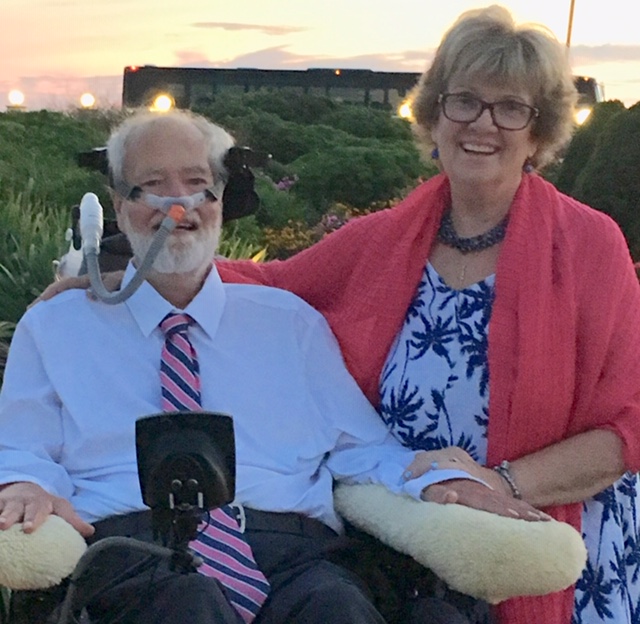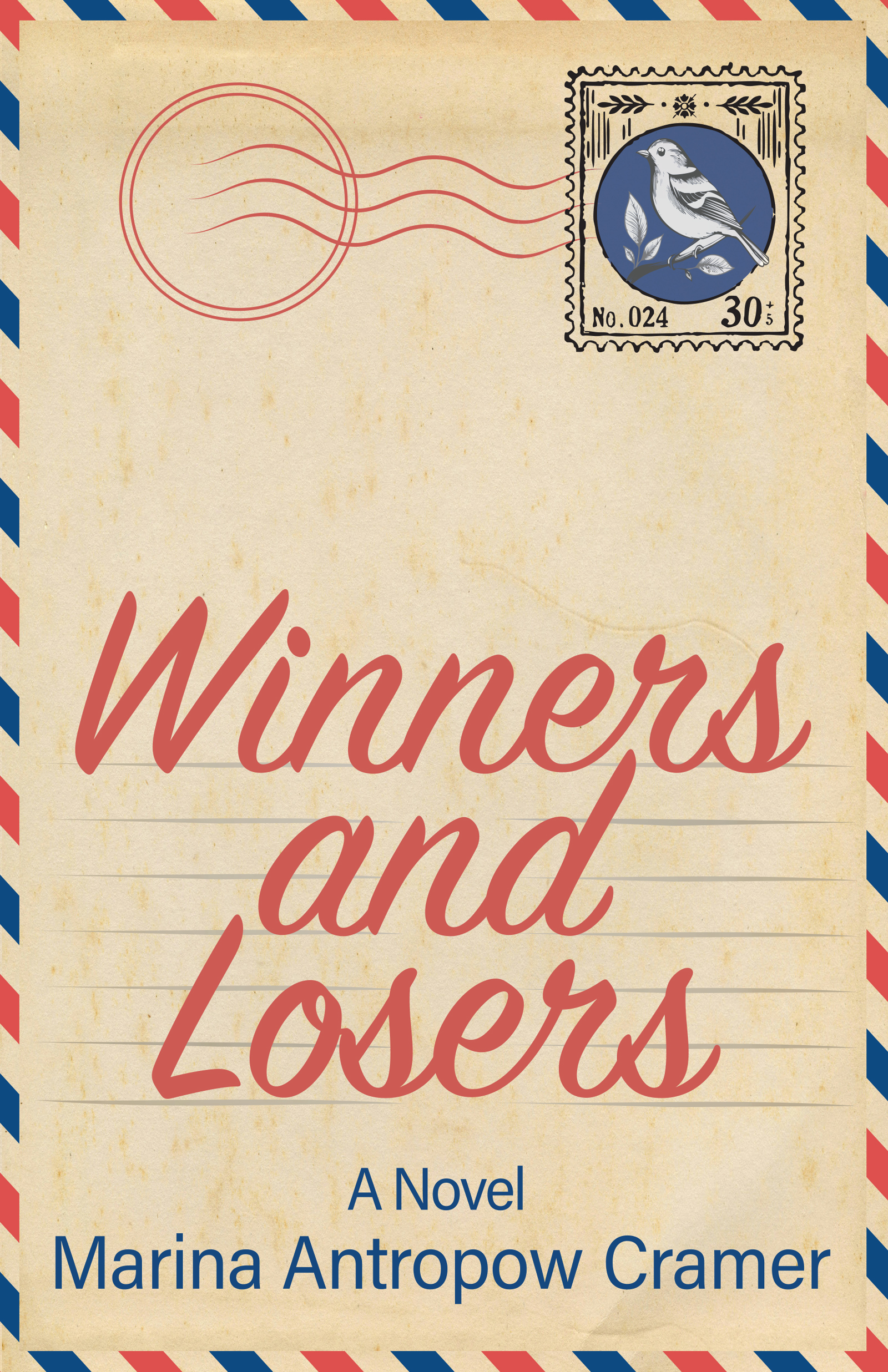Blink Spoken Here is a powerful and moving story of the Pendergasts rare 27-year journey with ALS. It is told through the eyes of the patient, Christopher, who is among the longest living patients battling the disease. The book takes the reader on a roller coaster ride to the dizzying heights and abysmal lows experienced in the world of ALS.
Q: When did you first realize that you wanted to write your story?
A: I eased into the writing my book over many years. I first began by writing couple of nature stories back in the eighties. Following my diagnosis, I grew more reflective about life. As I did, I wrote more. I enjoyed teaching, entertaining and inspiring people so sharing my written work was natural. I shared the early ones and they drew excellent responses. Many of those beginning stories were about our children. The ALS Ride for Life also formed an endless reservoir for other story ideas. Often I was told to write a book. I just didn’t have the disciple or confidence to actually write an entire book. Worsening from the disease, I decided it was now or never. Four years before it published, I began in earnest to organize my numerous essays, poems and stories into a cohesive unit or we wrote additional ones to fill out the manuscript. Some were written several times in my mind but never put on paper until then. Finally, it morphed to the shape it has today.
Q: What was your favorite part about writing Blink Spoken Here and why?
A: Because the book is a memoir, the thing I enjoyed the most, by far, was recreating, writing and proudly sharing the wonderful memories of our children.
Q: Who is your biggest inspiration and why
A: A few people have had a lasting effect on me, some of whom are quite unusual. One whom looms wide accounts for my adventurous, fierce independence and love of wilderness is Davey Crockett. He was a frontier hero popular on TV when I was growing up in the ‘50’s. I wore my raccoon hat and dangling tail everywhere. Another inspiration was John F. Kennedy. He was intelligent, courageous, pioneering, visionary and committed to helping society.
Q: One of the many inspiring things about your memoir is the way in which it was written – using your assisted device, which is where your title comes from. How long did the writing process take you?
A: My book took a tremendous amount of time to write. I worked endless hours sometimes-entire days using an eye-controlled computer loaded with software allowing me to navigate, access and use most programs. The creative process of generating the ideas was not the all- consuming aspect of doing the book. It was the laborious effort to input the manuscript that gobbled up the time. The “writing” stretched over a year and one half. I naively thought when I typed my last word I was pretty much done. The editing proved to be extraordinarily slow, tedious and challenging. The scribes working for the Pharaoh chiseling stone I think could have done it faster. I bet I stared at the 15-inch monitor for a couple thousand hours, if not more. Many times my caregivers put me to bed well after midnight with aching, burning eyes.
Q: What was an obstacle, if any, that you and/or Christine needed to overcome while in the writing process?
A: I fell in love with Chris for many reasons. One standout was our ability to communicate. We would often talk for hours on end about everything. We shared our deepest thoughts and feelings. As time went on the progression of ALS made communication increasingly challenging. Chris now communicates and writes with his eye gaze program, which is not easy. Quick requests and statements are perfect for the eye-controlled computer and it a Godsend for that. On the other hand, in a conversation thoughts come faster than he can quickly input. Time lags and the flow of dialogue slows to a crawl. Expressing himself was time consuming and required a lot of patience on both of our parts. Conversation no longer had much give and take. It became give and wait. In public conversations, his comments are always behind the current topic or question.
In compiling our thoughts for the book, organizing time events and being as accurate as our memories allowed was an arduous task. The ‘Patience is a virtue’ adage we learned through a difficult trial by fire process helping our give and take conversing to continue. It is something we refine every day. It made this book possible.
Q: Were there any moments or challenges that you faced that made you question whether or not you wanted to continue to write the book?
A: Quite often, I lost files or documents. Various rewrites became confused because of poor organizing and vague names. Filing, saving and overall navigation are particularly difficult with eye control. I frequently hit a key in error because I glanced in the wrong place for an instant causing me to accidentally loose work, which everyone does but for me it was a particularly crushing loss. My wife quieted my screams, smoothed my frazzled nerves and gently encouraged me to go on and tell this story of ours. The closer to the end, the more important her contributions. I’d be remiss not to mention my two volunteers who handled my printing and proofreading. Also, my caregivers did far more than traditional care tasks by helping me along this journey. A village gathered around me to make this book a reality.
Q: As someone who taught for much of their life, you are no stranger to giving out lessons and advice to students. What is one piece of advice you would give to someone who is struggling – whether it be with a physical or mental illness?
A: I attempt to provide advice more subtlety than by pontificating. My teacher training taught me to show, not tell. I advise through example and sharing my story of how I coped with my challenge. If I had to list specific points they would be – try to not to be engulfed in fear. Become introspective and turn to a higher power however you perceive it. Have faith in that Power. Faith is the basis of hope, inner strength and fierce determination. With faith, mountains move because it is the most powerful force on earth.
Q: What is your favorite part about the ALS Ride for Life?
A: I can’t simply tell one favorite thing from this experience, there were so many spectacular occurrences. If forced to respond, I would be philosophical. I loved being able to assemble an extraordinary team of people who pitched in their all to organize and pull off a constellation of highly improbable events stretching across two decades – all during the time doctors told me I was dying. Knowing the world is a better place, suffering eased, children happier and cures closer because of the 10 million dollars we raised (directly or indirectly) for the “good” fight fills me with inner joy and peace. This is my most favorite part of the Ride. It leaves a legacy for other patients to carry on and never surrender to hopeless.
Q: What is the hardest part about the ALS Ride for Life?
A: The most difficult without question is watching every single Rider who was at my side on earlier Rides die from the disease. I have lost 90; many of them became close friends. Each new patient I meet I know will die without a miracle, although I encourage them to hope otherwise. There is no reason why they can’t be like me. A breakthrough miracle may occur with every new day. Yet ironically, I am wracked by survivor’s guilt even as I waste slowly away too.
Q: One of the many important messages of your book is to teach people about the trials and tribulations of ALS. Had it not been for your own diagnosis, do you think you would be as knowledgeable about or involved in the community? Why or why not?
A: I was like any other American. No doubt, I would be on the outer edge of awareness unless I was touched within my own immediate circle. I was already a Naturalist and an environmental advocate. I participated in numerous campaigns defending nature. I am sure I would’ve continued my devotion to protecting our natural world and remain an outspoken activist. Instead of fighting for the health of the ALS population as I am now, I’d be fighting for health of our mother earth.

